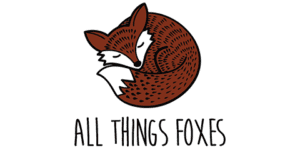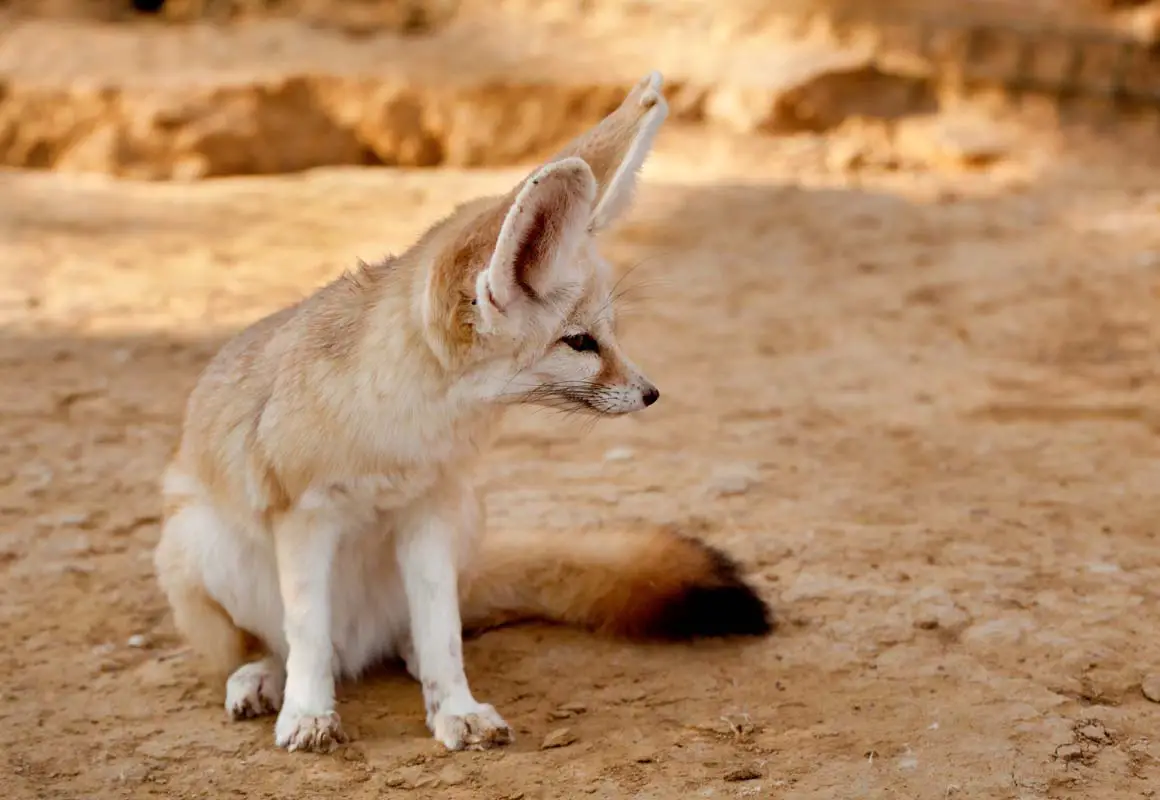How do foxes survive in the desert? They can be found in almost every region in the world and are one of the most widely dispersed of all the wild animals. The desert has many types of foxes that have managed to settle there.
Desert Foxes
Desert foxes are species of foxes that are either native to the desert regions or have made their homes there. There are over 10 fox species that live in the desert. Fennec foxes, bat-eared foxes, corsac foxes and more. They have evolved to handle the harsh desert conditions.
The fox is one of the most adaptable animals on the planet. With over 30 species of foxes, it’s no wonder that they can spread to different regions and thrive there. There are at least 10 species of foxes that call deserts their home. The most well known being the fennec fox.
Watch Desert Foxes Video
Subscribe to our Youtube Channel for weekly videos!
All of the desert foxes in this article live in desert regions and other semi-desert regions.
Living in the desert has caused them to change their behavior and their biology to survive in places that most animals would steer clear of. They not only survive there, but they also flourish.
Most desert foxes are small, with big ears. They usually have a tan or golden fur that blends in well with the desert landscapes. Some have different colors depending on where they live.
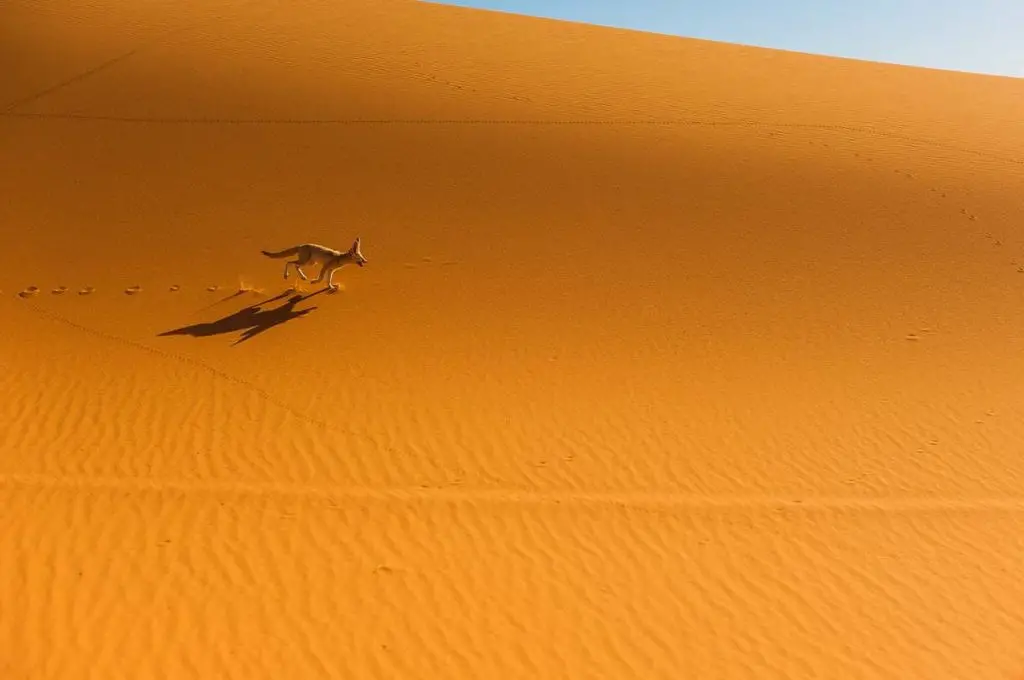
List of Desert Fox Species
There are over 10 species of foxes that live in deserts, we have listed 9 of the most known of them here. These foxes live throughout the world and have largely made their homes in the desert.
List of desert foxes:
- Cape Fox
- Pale Fox
- Fennec Fox
- Bat-Eared Fox
- Tibetan Sand Fox
- Blanford’s Fox
- Corsac Fox
- Kit Fox
- Culpeo
While most of these foxes are native to the desert or have lived primarily in desert regions, not all of them are restricted to just the desert. Some of them have been brought into other regions as pets, such as the fennec fox.
Let’s take a closer look at some of these amazing animals.
Cape Fox
The Cape fox (Vulpes chama) lives in the sub-Saharan African desert. They are the only Vulpes species to live below the equator. These foxes prefer the desert landscape and avoid forest areas and thick brush.
They weigh around 5-6 pounds and are roughly 21 inches long. They are small foxes that love the desert heat. Cape foxes are a sandy color with peppered dark patches.
Little is known about their lifespans and the species has not been studied as much as other species of foxes.
They feed on small game, rodents, rabbits, insects, larva, and reptiles. They have also been known to feed on carrion, left by other carnivores such as jackals.
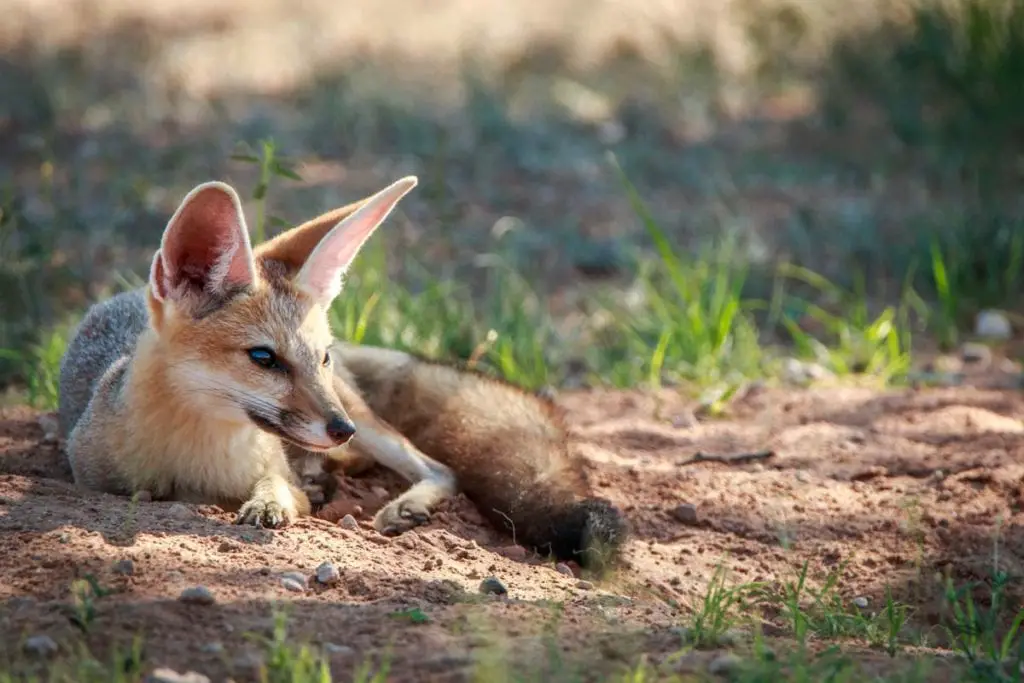
Pale Fox
The pale fox (Vulpes pallida) is another small fox that lives in multiple areas of Africa, spreading across from Mali to Sudan. They are sometimes called the South African version of the fennec fox due to their large ears. Pale foxes thrive in the deserts of Africa and prefer areas with some vegetation but not a lot of thick brush.
They weigh around 4-6 pounds and are similar in size to the Cape fox. They are a sandy color that blends in well with the desert, with a pale white underbelly. They have a bushy red and brown tail.
This is another fox that has not been studied enough to have complete information. The population size is unknown, but they are thought to be well dispersed throughout Southern Africa.
They feed on insects, small game such as rodents and rabbits, as well as larva, vegetation and carrion.
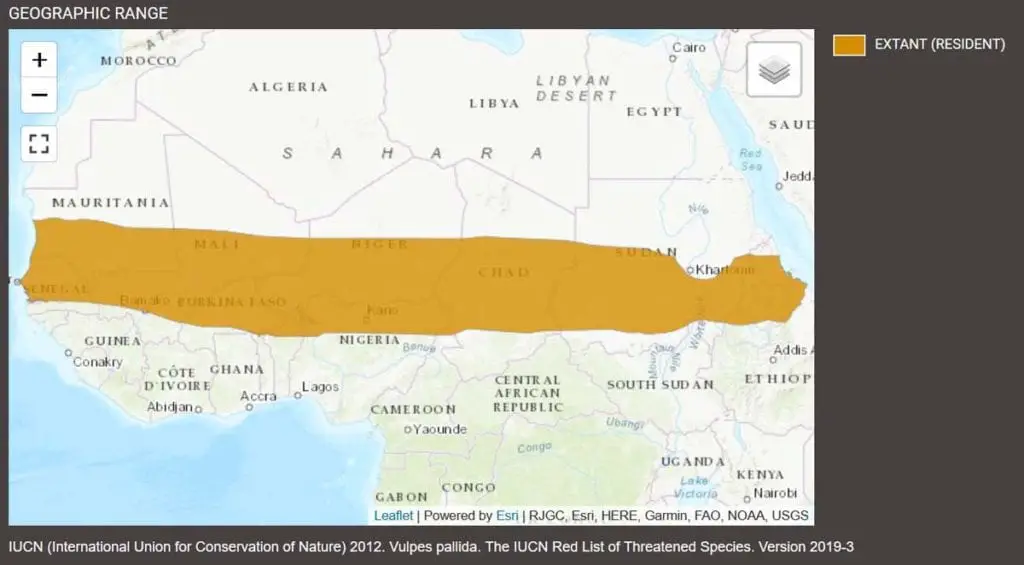
Fennec Fox
The fennec fox is one of the most well known of the desert foxes. They are mostly found in the central Sahara desert. Fennec foxes have large ears that are used to listen for prey underground as well as them being a defense mechanism to warn them of predators in the area. They make their dens underground, which usually has many openings.
They are small foxes that weigh around 2-3 pounds. Fennec foxes have sandy-colored fur that helps them blend into their surroundings. They have small bushy tails and are the smallest of all the species of foxes.
Desert foxes have not been studied as much as other foxes so there is not a lot of information on their population numbers. They are thought to not be endangered. Most of what is known about fennec foxes has been gathered from information that comes from the ones who are in captivity.
Fennec foxes mostly eat insects, small game such as rodents, as well as reptiles and some vegetation.
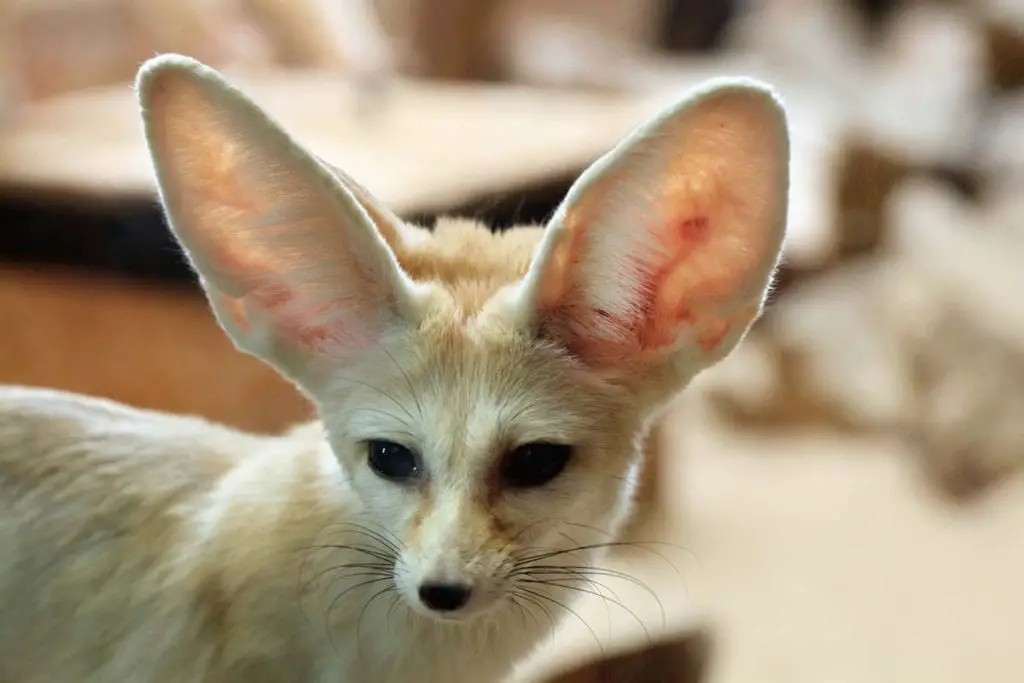
Bat-Eared Fox
The bat-eared fox (Otocyon megalotis) is one of the most unique looking of the desert foxes. They live in the African deserts in the short-grass savannahs and scrublands and they are one of the only canid species that live in groups, up to 8 bat-eared foxes will live together and their territories will often cross with other groups of them.
They are small foxes that are 7-12 pounds and around 26 inches long. Bat-eared foxes are mostly known for their huge ears that are about 5 inches long! They are a sandy dark color, with dark faces and pale underbellies.
These foxes are unique because they do not mind sharing their territories with other bat-eared foxes, it has been recorded that up to 70 of them live in one square mile. They are thought to be very common in Africa and have no endangered status.
They feed primarily on insects Termites make up to 70% of their diets. Their diets also consist of lizards, fruits, and eggs.
Tibetan Sand Fox
The Tibetan sand fox (Vulpes ferrilata) lives in the desert and plateau regions of Tibet and China. This fox shares the name “sand fox” with multiple other desert foxes. They prefer the plateau region of Tibet and thrive in hot environments. The Tibetan sand fox is considered one of the 12 true type fox species.
These are small foxes that weigh 8-10 pounds and get up to around 28 inches long. They have short ears and are a tan and gray color. The Tibetan sand fox has narrow muzzles and small bushy tails.
Very little is known about their population numbers. They mate for life and the two parents hunt in pairs. These foxes make their dens in the base of large boulders and prefer open areas with little vegetation cover.
Their main diet consists of plateau pikas, as well as rodents, wooly hairs, and lizards. One cool fact about them is that they form hunting relationships with bears, who dig out pikas, allowing them to prey on the ones who get away from them.
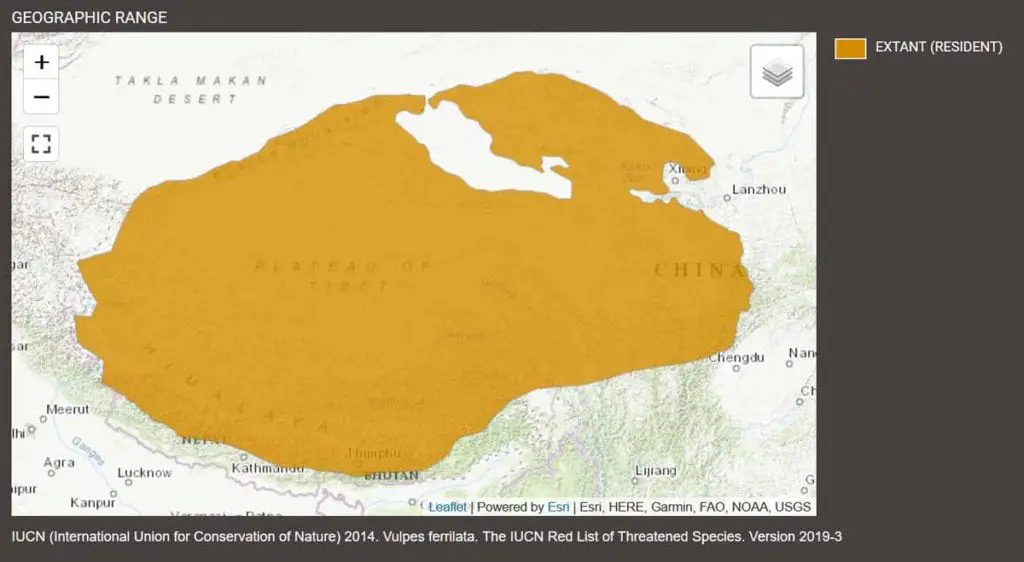
Blanford’s Fox
The Blandford’s fox (Vulpes cana) is a rare fox from southwest Asia. They occupy many desert territories from Iran to Egypt. This fox is named after the English naturalist William Thomas Blanford. They thrive in desert conditions and are known to be great jumpers and rock climbers.
They are very small, similar to fennec foxes, at only 3-4 pounds. They are a tan color with a white underbelly and a black-tipped tail. Its footpads are not covered with hair and they share a lot of similarities with cats.
It is well known that these foxes have large populations across southwest Asia and Arabia, however, very little is known about their health and behavior. They are considered a protected species in Isreal.
They eat mostly seedless grapes, melons, and insects. This makes their diet unique from other desert foxes who feed on insects and rodents.
Corsac Fox
The corsac fox (Vulpes corsac) lives in the desert territories of central Asia, from Afghanistan to Tibet. It avoids forest areas and areas with vegetation, sticking mostly to semi-desert regions. They tend to use burrows dug by other animals, from which they make their dens.
Corsac foxes are medium-sized foxes that have reddish-gray fur and silver undertones. Their underbellies are white and yellow. They have large pointy ears and look a little bit like coyotes. Corsac foxes are around 6 pounds and 21 inches long.
Not much is known about their population numbers and very little is know about their behavior in the wild. Hunting and the clearing of their land have been thought to have reduced their numbers. In captivity, they live up to 13 years old.
The corsac fox feeds mostly on rodents, insects, birds, and vegetation. They have large ears that help them listen for prey and they have a hunting style similar to most foxes where they pounce down onto their prey.
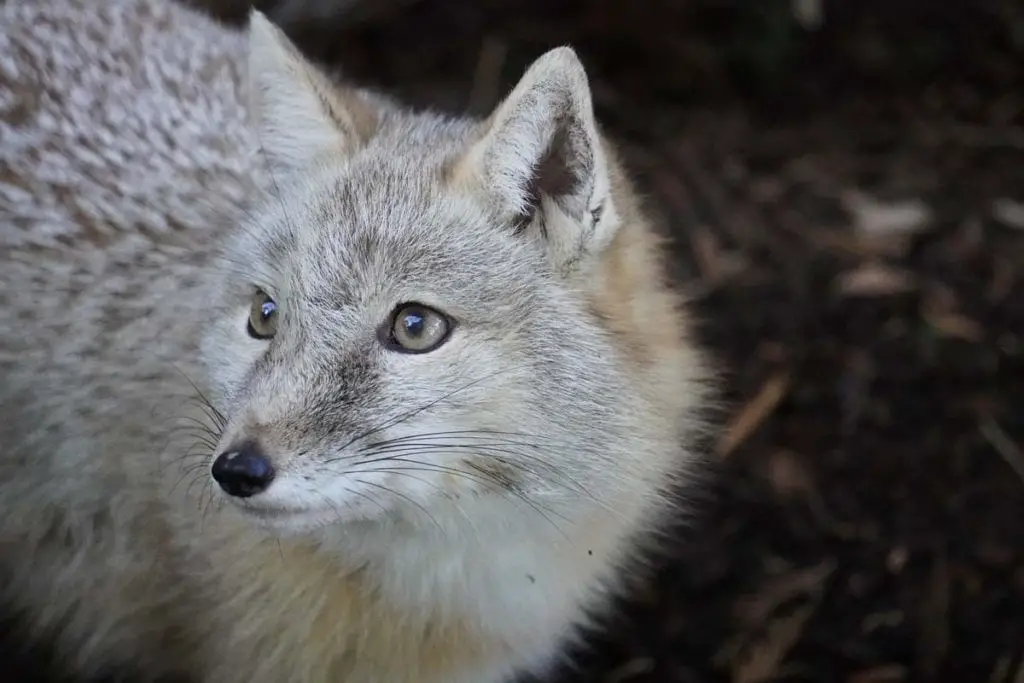
Kit Fox
The kit fox (Vulpes macrotis) lives in the open deserts and sand dunes of North America and Mexico. They prefer desert landscapes with very little vegetation. Kit fox’s hardly drink water and absorb it mostly from the animals from which they eat.
Kit foxes are medium size foxes with large ears. They have a sandy peppered looking fur, similar to their cousins, gray foxes. The males are larger than the females at around 5 pounds, the females being about 15% smaller. They are about 21 inches in length.
Their populations are declining and are endangered in some areas. Human expansion has pushed them out of their territories and they have a lot of competition with red foxes who live in some of the same areas.
They eat mostly small game such as rodents and rabbits, as well as insects, lizards, and sometimes fish. They also eat birds and bird eggs. When food is scarce they will eat tomatoes and cactus fruit.
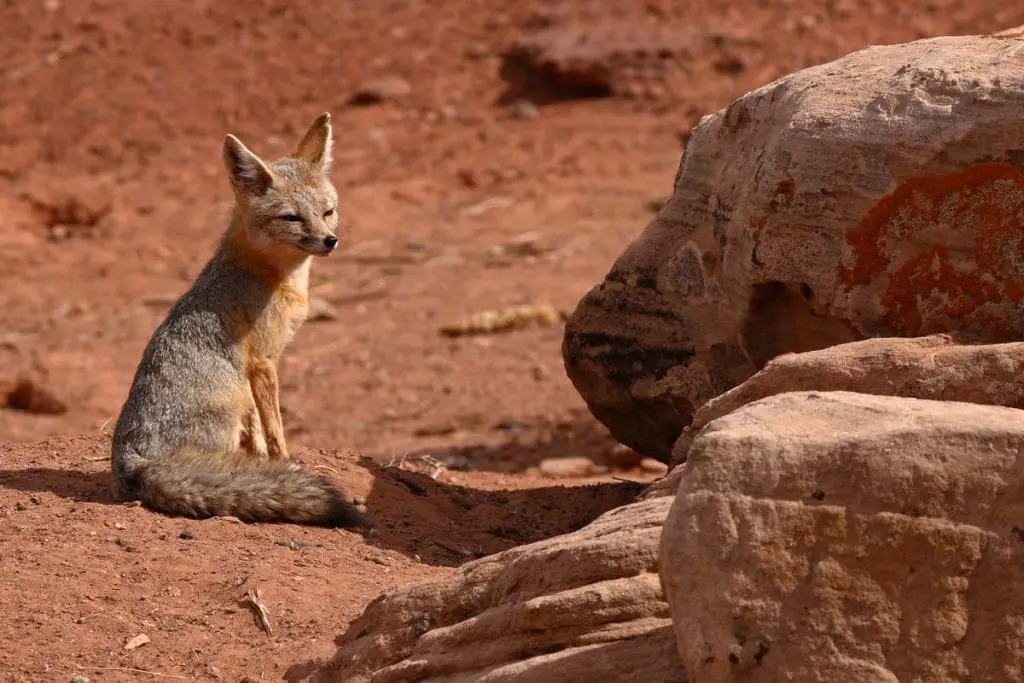
Culpeo Fox
The culpeo fox (Pseudalopex culpaeus) lives in the desert regions of South America, from Ecuador to Argentina. They live in the high altitudes of the Andes and prefer to be elevated, occupying deserts and sand dunes as well as grasslands.
Culpeo foxes are a medium-sized fox weighing up to 14 pounds. The males are usually heavier and longer in length than the females. The male adults are about 18 inches in length. They are a sandy peppered color with orange and black on their tails.
Not much is known about their population numbers or their lifespan. The oldest known Culpeo fox was 11 years old. They have very few natural enemies and pumas are thought to be the only animal that preys on them.
Culpeo foxes eat small game animals, larger animals like sheep, insects, birds, and lizards as well as some fruit.
Desert Fox Geography
In the desert, foxes rely on their ability to adapt to their surroundings. Many of the foxes listed in this article have large ears that serve them well underground where they listen for prey and predators.
They live in harsh desert regions as well as highly elevated regions, grasslands, plateaus, and other semi-desert regions.
Desert foxes make their dens in areas that have a lot of sand, boulders, and burrows that are sometimes built and abandoned by other animals.
They occupy territories in North America, South America, Asia, and Africa. Their fur usually reflects the sandy deserts where they live, being tan, pale, peppered and golden orange.
The Ecology of Desert Foxes
Foxes in the desert seem to prefer areas that have very little vegetation. They also stay away from human developments and areas with large human populations. Most desert foxes need very little water to survive and feed on only a small amount of fruits and vegetables. They feed mostly on insects and rely on them to sustain them in the harsh conditions.
Predation is usually from other wild canids such as jackals and sometimes large birds like eagles and owls.
They seem to form larger family units, that help with hunting and raising their young, having dens with up to 10 openings.
Desert Adaptations
Their ability to adapt in the desert has earned them the title of desert foxes, being able to withstand the heat and dry landscapes. The fennec fox breathes very rapidly, with up to 690 breaths per minute! This helps cool them off.
The large ears of desert foxes also help to cool them down, as well as being a useful tool for listening for prey and predators. Their fur is thick enough to keep them warm during cold desert nights.
There is very little water in the deserts, no lakes or ponds, so they must rely mostly on absorbing what they need from the prey that they kill. This is a useful adaptation in the desert.
It’s amazing how these little foxes seem to survive when the world around them is so harsh and unforgiving. It’s inspiring and it makes me thankful for the good fortune and opportunities that we as humans have.
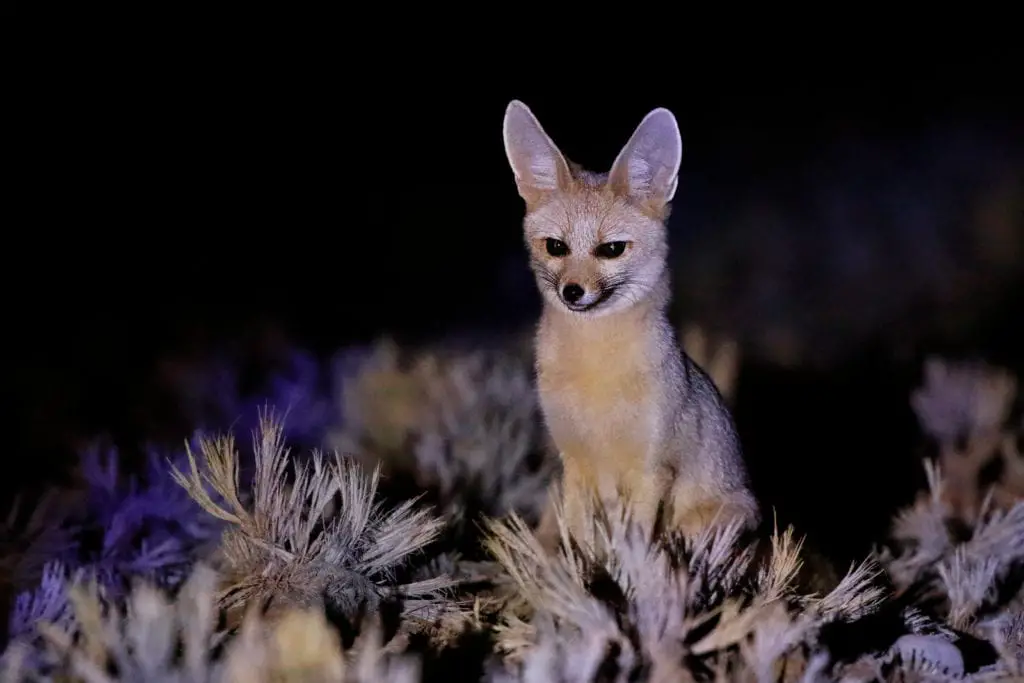
What Do Foxes Eat in the Desert
In the desert, there are less small game animals, so foxes survive mostly on insects, rodents, reptiles, and birds. Some desert foxes are lucky enough to live in areas that have rabbits and some vegetation.
They are small enough that they do not need much to sustain them. They have been known to eat things like scorpions, bird eggs, lizards, larva, and other creatures.
Desert foxes will also feed on carrion, which are animal carcasses left by other carnivores. They do not need a lot of water and will absorb what they need from the prey that they kill. Their digestion systems allow them to use every last once of their food source.
Foxes are opportunistic by nature, but in the desert, they must take what they can get, or resort to eating roots, larva and other forage foods.
Most foxes are considered to be omnivores but many of these desert foxes can also be considered insectivores since their diets are mostly that of insects.
Check out our PAWSOME new collection of Fox Gifts
See more about fox habitats.
Related Questions
Do desert foxes only live in the desert? While the desert is mainly where they call home, some of these foxes live in areas that border the desert, such as grasslands, and areas with a small amount of brush. Some even live in elevated areas that have a desert climate with a little more vegetation.
Are all desert foxes small? Most foxes that live in the desert are smaller species than the larger foxes such as red foxes. They are anywhere from 2-18 pounds and are usually much smaller in length. Their ears are bigger than average foxes, which helps them survive in the desert environment.
